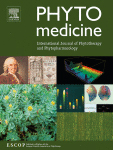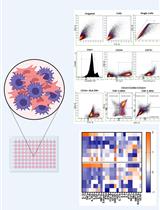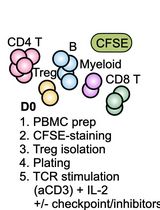- EN - English
- CN - 中文
Quantification of Nitric Oxide and Reactive Oxygen Species in Leishmania-infected J774A.1 Macrophages as a Response to the in vitro Treatment with a Natural Product Compound
感染利什曼原虫J774A.1的巨噬细胞响应体外天然化合物处理的一氧化氮和活性氧定量分析
(*contributed equally to this work) 发布: 2019年12月05日第9卷第23期 DOI: 10.21769/BioProtoc.3442 浏览次数: 4672
评审: Alexandros AlexandratosAdam IdoineAnonymous reviewer(s)
Abstract
Leishmaniasis is a parasitic disease caused by the obligatory intracellular protozoa Leishmania spp. Current therapeutic options are limited and thus, drug discovery against leishmaniasis is very important. Nevertheless, there is a great difficulty to develop therapeutic strategies against the disease because the parasite deploys various mechanisms to evade the immune system and multiply inside the host. Among the main factors of the immunity that are recruited to confront the Leishmania infection are the macrophages (MΦs) that produce effector molecules such as Nitric Oxide (NO) and Reactive Oxygen Species (ROS). Therefore, efficient drug agents should combine the antileishmanial effect of these gaseous transmitters along with the enhancement of the host’s adaptive immunity. In the quest of therapeutic alternatives, natural products have been extensively studied and are considered as candidate antileishmanial agents since they exhibit specific properties in modulating the host’s immune response towards an effective anti-leishmanial cell-mediated immunity capable to eliminate parasitic dissemination. In the current protocol, Leishmania-infected MΦs (J774A.1 cell line) that have been treated with various increasing concentrations of a natural compound, are tested for the production of the aforementioned molecules. In order to detect NO production, we employ the Griess colorimetric nitrite assay and quantification relies on the construction of an accurate standard curve using appropriate standards of known concentration. ROS detection and quantification is achieved by flow cytometry and relies on the use of carboxy-H2DCFDA, an indicator that converts to a fluorescent form when interacts with ROS molecules.
Keywords: Nitric Oxide (一氧化氮)Background
Macrophages (MΦs) are important innate immune effector cells that participate in host defense, providing enhanced antimicrobial activity. They are characterized by a remarkable plasticity and unique abilities to polarize toward different phenotypes. On one hand, classically activated macrophages are known to have major roles in host defense against various microbial pathogens, while alternatively activated macrophages are instrumental in immune regulation and wound healing (Leopold Wager and Wormley, 2014). The term “classically” activated is used to designate the effector macrophages that are produced during cell-mediated immune responses upon the dual signal of interferon-γ (IFN-γ) and tumor-necrosis factor (TNF), characterized by enhanced microbicidal or tumoricidal capacity and secretion of high levels of pro-inflammatory cytokines and immune mediators. More specifically, IFN-γ is produced by innate (NK cells) or adaptive immune cells (T helper 1 cells) and primes macrophages to secrete pro-inflammatory cytokines and to produce increased amounts of superoxide anions, oxygen and nitrogen radicals that increase their killing ability (Dale et al., 2008).
The obligatory intracellular parasites of the genus Leishmania have deployed sophisticated mechanisms to evade and modulate the host’s immune system for their benefit and consequently, they are able to survive and persist within MΦs. Consequently, in the case of Leishmania infection, MΦs are having a dual role either as effector cells with leishmanicidal activity or as host cells. The fate of Leishmania spp. parasites is determined by the activation status of MΦs (Tomiotto-Pellissier et al., 2018). “Classically” activated MΦs are capable of killing parasites effectively via the production of Nitric Oxide (NO) upon activation of inducible nitric oxide synthase (iNOS) and other leishmanicidal molecules, such as Reactive Oxygen Species (ROS). NO and ROS are two key players in the macrophage defense system against intracellular parasites (Horta et al., 2012; Roy et al., 2017). Nevertheless, Leishmania spp. parasites have been adapted to survive and replicate in this hostile environment by deploying antioxidant systems or by suppressing ROS and NO production (Kumar et al., 2001; Denkers and Butcher, 2005; Gupta et al., 2013).
In recent years, there is an increasing interest in the study of natural products against leishmaniasis because several plant extracts or isolated compounds exhibit a promising antileishmanial activity which may not only be due to their direct action on parasite but also to a concomitant effect on the host’s immune response (Rodrigues et al., 2015). Several natural products have been tested for their ability to increase the production of ROS and/or NO in in vitro and in vivo experimental models of leishmaniasis (Torres-Santos et al., 1999; do Socorro et al., 2003; Georgopoulou et al., 2007; Patricio et al., 2008).
In this protocol, we aim to quantify the NO and ROS production by Leishmania spp.-infected J774A.1 macrophages as a response to treatment with various increasing concentrations of Total Phenolic Fraction (TPF) derived from Extra Virgin Olive Oil (Angelis et al., 2017). The quantification of NO is achieved with the use of Griess assay which relies on the accumulation of nitrites in cell culture supernatants. Respectively, the relative quantification of TPF-mediated ROS generation is determined with the use of cell-permeable carboxy-H2DCFDA fluorescent probe which is deacetylated by cellular esterases to form 2',7'-dichlorodihydrofluorescein (H2DCF). In the presence of ROS, predominantly H2O2, H2DCF is rapidly oxidized to 2',7'-dichlorofluorescein (DCF), which is highly fluorescent, with excitation and emission wavelengths of 498 and 522 nm, respectively (Bae et al., 2000). These protocols can be used to gain a first in vitro evidence, about whether or not, these immune mechanisms are activated by an antimicrobial agent.
Materials and Reagents
- Cell Culture Flasks with filter cap, 25 cm2 (Thermo Fisher Scientific, catalog number: 156367)
- Cell culture Flasks, plug seal cap, 25 cm2 (Greiner Bio-One, catalog number: 690160)
- Cell scrapers (Sarstedt, catalog number: 83.1830)
- Cover glasses square (VWR, catalog number: 6311570)
- Falcon® Round-Bottom Tubes, 5 ml (Corning, catalog number: 352008)
- 96-well flat bottom tissue culture plates (Sarstedt, catalog number: 83.3924.005)
- 24-well flat bottom tissue culture plates (Sarstedt, catalog number: 83.3922.005)
- Pipettes tips: 0.5-10 μl, 10-200 μl, 200-1,000 μl (Greiner Bio-One, catalog numbers: 771291, 739290, 740290)
- Pleated filter paper (Sigma-Aldrich, catalog number: WHA1201150)
- Reaction tubes, 1.5 ml (Greiner Bio-One, catalog number: 616201)
- Serological pipettes 2 ml, 5 ml, 10 ml (Sarstedt, catalog numbers: 86.1252.001, 86.1253.001, 86.1254.001)
- Sterile syringe filter 0.22 μm (Millipore, catalog number: SLGVV255F)
- Syringes 5 ml (Terumo, catalog number: SS+05S21381)
- Cell lifter (Corning, catalog number: 3008)
- Leishmania infantum promastigotes (zymodeme GH8, strain MHOM/GR/2001/GH8)
- Leishmania major promastigotes (zymodeme LV39, strain MRHO/SU/59/P)
- Immortalized macrophage cell line J774A.1 (ATCC; Rockville, USA/ ATCC No: TIB-67)
- Total Phenolic Fraction (derived from Extra Virgin Olive Oil from agricultural cooperative in Zaros region, Crete, Greece)
- RPMI-1640 (w/o) L-glutamine (Biowest, catalog number: L0501)
- Fetal Bovine Serum (Biowest, catalog number: S181B)
- L-glutamine (Biosera, catalog number: LM-R1641)
- HEPES buffer 1 M (Biowest, catalog number: L0180)
- Penicillin-Streptomycin solution 10,000 U/ml (Biowest, catalog number: L0022)
- Dimethyl sulfoxide (DMSO) Cell culture grade (PanReac Applichem, catalog number: A3672,0050)
- Ethanol absolute (Sigma-Aldrich, catalog number: 32205-M)
- Formalin (Sigma-Aldrich, catalog number: R04586-82)
- Trypan blue dye for vital staining (BDH, catalog number: 34078)
- Milteforan® 20 mg/ml (Hexadecylphosphocholine, [HePC], Virbac S.A.)
- Hydrochloric acid (HCl) solution, 1 M (Sigma-Aldrich, catalog number: 150696)
- Sodium chloride 99.9% (NaCl) (Applichem, catalog number: 381659)
- Potassium chloride (KCl), ACS reagent, ≥ 99.0% (Sigma-Aldrich, catalog number: 746336)
- Sodium phosphate dibasic (Na2HPO4), ACS reagent, ≥ 99.0% (Sigma-Aldrich, catalog number: 795410)
- Potassium phosphate monobasic (KH2PO4), ACS reagent, ≥ 99.0% (Sigma-Aldrich, catalog number: 795488)
- Sodium hydroxide (NaOH) solution, 1 M (Sigma-Aldrich, catalog number: 79724)
- Carboxy-H2DCFDA (Thermo Fisher Scientific, catalog number: C400)
- Hydrogen Peroxide solution 30% (w/w) (Sigma-Aldrich, catalog number: H1009)
- ortho-Phosphoric acid 85% (AppliChem, catalog number: A0989)
- Sulfanilamide (Sigma-Aldrich, catalog number: S9251-100G)
- N-(1-Naphthyl) ethylenediamine dihydrochloride (Sigma-Aldrich, catalog number: 222488)
- Sodium nitrite (NaNO2) (Sigma-Aldrich, catalog number: 237213)
- Complete RPMI-1640 medium (see Recipes)
- Fetal Bovine Serum solution (FBS) (see Recipes)
- Phosphate Buffer Saline (PBS), 10x, pH 7.2-7.4 (see Recipes)
- 0.4% (w/v) Trypan blue exclusion dye (see Recipes)
- Sodium nitrite (NaNO2) solution (see Recipes)
- Griess reagent (see Recipes)
- H2O2 solution (see Recipes)
Equipment
- New BrunswickTM Galaxy® 170 S CO2 Incubator (Eppendorf, catalog number: Galaxy 170 S)
- Refrigerated Incubator 26 °C (Sanyo, catalog number: MIR-253)
- BD FACSCalibur Flow Cytometer: 3-Color (BD FACSCaliburTM, catalog number: 342973)
- ELISA Microplate reader (Dynatech Laboratories, catalog number: MRX)
- Optical microscope (Olympus, catalog number: BHB)
- Sterile biosafety cabinet (Telstar, catalog number: Bio-II-A)
- Gilson pipettes (Gilson, catalog numbers: PIPETMAN Classic P-10, P-20, P-200, P-1000)
- Malassez counting chamber (Paul Marienfeld GmbH & Co., catalog number: 0640610)
- Multichannel pipette (Brand, catalog number: 703710)
- pH Meter (Thermo Fisher Scientific, catalog number: 13-644-928)
- Pipette controller (Brand, catalog number: accu-jet® pro 26300)
- Water distiller (Sartorius, catalog number: H2O-I-1-UV-T)
Software
- Microsoft® Office Excel 2010 (Microsoft)
- FlowJo, version 10 (BD)
Procedure
文章信息
版权信息
© 2019 The Authors; exclusive licensee Bio-protocol LLC.
如何引用
Karampetsou, K., Koutsoni, O. S. and Dotsika, E. (2019). Quantification of Nitric Oxide and Reactive Oxygen Species in Leishmania-infected J774A.1 Macrophages as a Response to the in vitro Treatment with a Natural Product Compound. Bio-protocol 9(23): e3442. DOI: 10.21769/BioProtoc.3442.
分类
微生物学 > 微生物生物化学 > 其它化合物
免疫学 > 免疫机理 > 体外模型
您对这篇实验方法有问题吗?
在此处发布您的问题,我们将邀请本文作者来回答。同时,我们会将您的问题发布到Bio-protocol Exchange,以便寻求社区成员的帮助。
提问指南
+ 问题描述
写下详细的问题描述,包括所有有助于他人回答您问题的信息(例如实验过程、条件和相关图像等)。
Share
Bluesky
X
Copy link












